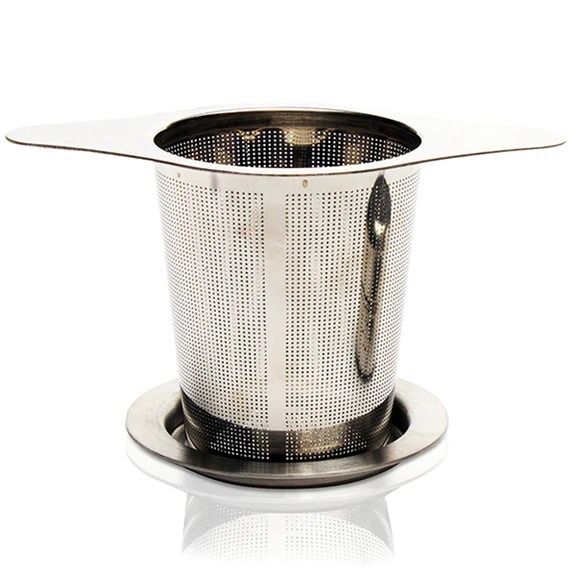Place the infuser in a cup
For black tea, chai, rooibos, fruits blends and herbals pour water boiled at 100oC, into the cup
For green tea pour water (almost boiled) at 80-90oC, into the cup
You will see colour emerge from the tea leaves in the cup almost straight away but you should allow the leaves to infuse (steep) for 3 – 5 minutes to get the full flavour.
If you use a large cup or mug, adjust the “1 teaspoon per 250ml” guide accordingly. A bigger infuser is better for larger mugs or travel cups.
Tip: Try not to overfill the infuser, as the water needs to be able to circulate around the leaves and most tea leaves will swell when immersed in water. Tea balls (round mesh infusers with a hinge and clip) and springjaw infusers (round with a spring and clip and handle like tings) are generally small and hold approximately 1 teaspoon of tea and can restrict the natural expansion of the leaves when brewing. These are ok if you like weak tea and perhaps use less than 1 teaspoon of tea per 250ml.
Our favourite infuser is the style that fits over most cups and mugs and has a lid to keep the tea warm whilst brewing and a drip saucer to sit the infuser on between making cuppas. This infuser style allows full expansion of the brewing leaves and if you like your tea stronger you can add more than 1 teaspoon of leaves easily.
Good quality tea leaves can be re-used, that is you can make a second or third cup of tea from the same leaves. The brew will be weaker and each time contain less caffeine (see our other article on caffeine in tea.
Our favourite infuser is: Mug Infuser Stainless Steel with lid/saucer

